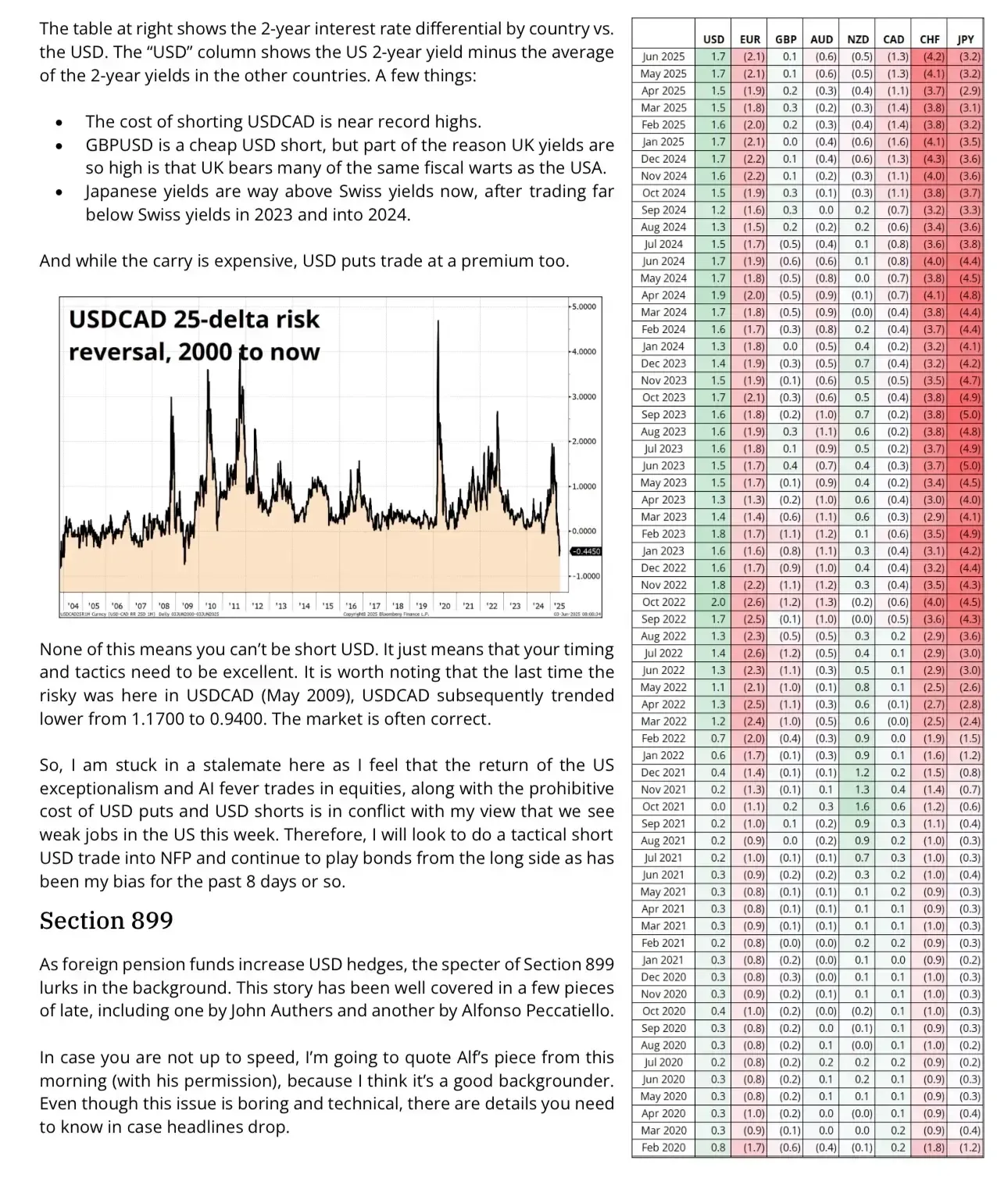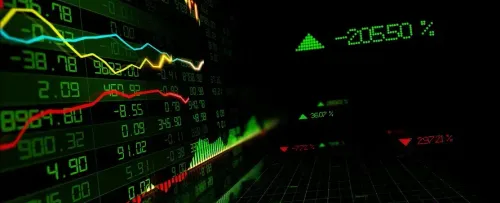Understanding Differences in Interest Rates Between Nations and the U.S. Dollar
Interest rate differentials are a basic component of international currency markets, influencing the cost of carry trades, capital flows, and how these are involved in foreign exchange volatility. The table above and the ensuing discussion offer a relevant comparison of the US 2-year yield versus that of major economies and hence provide necessary context for traders and investors in the foreign exchange market.
What are interest rate differentials?
Interest rate differential (IRD) is a measure of the difference in the rate of interest in two countries, using the United States' 2-year interest rate and the average of a group of other countries' 2-year interest rates. The differential is critical in determining currency valuations, especially since a higher yielding rate is bound to attract capital investment, thus strengthening the home currency.
Key Findings Based on the Current Data
Shorting the dollar is quite expensive, as is clearly seen by the ongoing positive differential between the currency of the United States and the Canadian currency. Short sellers of the dollar have to incur large carry costs, and therefore the venture is less appealing in the long run.
GBP/USD as a Cheap USD Short: While GBP/USD may seem like a cheaper way to short the USD, UK yields are elevated partly because the UK faces similar fiscal challenges as the US. This reduces the relative advantage of shorting USD via GBP.
Japanese yields have overtaken those of Switzerland, a reversal from the trends in 2023 and the first half of 2024, thus highlighting a remarkable shift in the monetary policy strategies being followed by these two traditionally low-yielding economies.
Representing the Data

The information and table provided by Deutsche Bank highlights a detailed breakdown of the 2-year yield differentials from February 2020 through June 2025. Notably:
The USD has maintained a strong positive differential against JPY and CHF, with values as high as 4.2% versus JPY in June 2025.
The spread against CAD has fallen, reflecting the relatively hawkish stance of the Bank of Canada compared to other central banks in the G10.
EUR, GBP, and AUD differentials remain positive but less pronounced, indicating more moderate policy divergence.
U.S. Dollar Options and Risk Premiums
The chart of the USDCAD 25-delta risk reversal since 2000 illustrates that while the carry, or the cost of holding a position, is quite high, the market is also pricing in a premium for USD put options. This suggests that investors are willing to pay more to hedge against a potential decline of the USD, which reflects an increase in perceived uncertainty or risk of downward moves.
Strategic implications
While the high cost of shorting the USD might deter some investors, this does not mean that it is impossible to short the USD. Timing and execution are crucial in this regard. For instance, the previous time there was such an elevated risk premium in USDCAD (May 2009), the currency pair saw a sharp downtrend over the next few months. The market often anticipates macroeconomic shifts before they become evident in economic data.
The Section 899 Backdrop
More foreign investors are now using USD hedges, which has brought to light Section 899---a low-key but important part of United States tax law---as a possible risk. Although the specifics are complex, the basic premise is that regulatory changes could also affect the costs and appeal involved in USD hedging, thus adding another level of complication for investors who invest globally.
Conclusion
Interest rate differentials still play an important role in influencing foreign exchange markets; yet, the current situation is defined by:
Historically, the costs of shorting the USD, especially compared to the CAD and JPY. Yield profile changes in Europe, the United Kingdom, and Japan. Elevated risk premiums for USD downside protection. For market participants, this would mean that while the USD may seem vulnerable to strategic shorts, it is important to carefully examine the cost of carry as well as the regulatory risks of Section 899. Consistently, timing and strategy are still paramount when navigating through these complicated dynamics.
Take advantage of the volatility in FX by opening an account with Seacrest Markets. Start trading in under 60 seconds! https://www.seacrestmarkets.io




